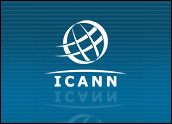
Now you can buy any domain with any suffix. If a dot-com is gone, so what? For a cost, you can create your own suffix using any letters and any name.
Domain names are made of three parts. The www, the “name” and the suffix like .com. With the Internet Corporation for Assigned Names and Numbers’ latest decision, you now have full creative control over the last two parts. This is a revolutionary new concept creating a global-scale boom in new names, massive potential confusion from duplication and global copycatting, all compounded with cyber-squatting, where piles of popular names will be turned into pyramids of shared stupidity.
The explosion of new names will eventually hit the fan, and the global entrepreneurial community in desperate need of making some mega online bucks will ride this flood by paying top dollar to have any desired name with an equally desired suffix to corner markets.
Globally Beneficial
However, it’s a great move that favors the global consumer. This move creates a new wave of interconnected global interactions and equally provides existing powerhouse name owners with a new set of strategies and angles to expand their global outreach by marking new territory.
With this new decision, big and small players will have their own suffixes like ibm.ibm, while others would create hotels.paris or play.casino all the way to sex.sex. Never in the history of business will a single decision create so much impact as this bold new policy by ICANN. Even when domain names were originally introduced, the adaptation process matured over a decade, and now everyone engaged in e-commerce has become so financially dependent on the structure of their domain names, the impact will be massive. Without a clear blueprint or a proper evaluation of its existing dot-com potential, a business can make huge blunders as sharks enter in protected waters.
Copycats, by the millions, like the early dawn of e-commerce, tried to register at times entire phone books and dictionaries in hopes of selling them to other bidders. Most eventually got exhausted while some made huge killings.
Who are the winners and losers of this policy? At a time where old media and new ones are clashing head on, the alliance of Google and Yahoo could wipe out old-fashioned advertising while search engines track our every move and predict every buying decision well in advance. This move sits very well for globally e-commerce driven models of the new world.
Marketing Opportunity
The winners of this move are the holders of creatively unique identities with a solid Five Star Standard of naming, which are not only globally protected under trademark laws, but have also earned the recognition and respect of global customers. One-of-a-kind names like Sony, Microsoft, Rolex or Panasonic all have many new options opened up with additional control for global online marketing and image building.
The losers in this case will be the remaining 90 percent majority of the global businesses that are somewhat chasing illusionary fame and are still convinced that their dysfunctional names are real winners.
They believe that by hopping all over the world with new suffixes, they will be able to push their names to the very top — and they never will. Cyber identities such as dynamic.net, dynamic.biz, dynamic.info or dynamic.dynamic could be of a single business empire, or many different ones.
The fact remains, it will never become an exclusive identity as long as it is grossly diluted. Today, a huge portion of businesses are in serious duplication or global language confusion mess. When the laws of corporate nomenclature are sacrificed over logo-based identity that creates a false illusion of fame, this disregard for the value of alpha-structure will now once again result in failure.
Wake Up
This domain blast is a noisy wake-up call to big and small players of the world alike.
As predicted in 1998 in my book Domain Wars, global pressures will eventually force the opening of domain registration to a free-for-all model. All these additional suffixes will now lead to billions of redundant domain names and massive confusion that will stem from a boom in domain name registration aftermarkets. Trademark lawyers will also benefit greatly from this tidal wave while businesses, on the other hand, will be forced to acquire a sharper awareness of the complexity of naming and Five Star ownership.
The internationalization of the Net is also a good thing, and this policy accommodates billions of new players ready to join the race online. English domain names will eventually be dwarfed by the sheer numbers of Chinese and other foreign-language names. The new name-economy clearly predicts non-English-based e-commerce powerhouses. There are also looming dangers on how the Internet, based on population, could end up being split among super nations.
Never in corporate history has there been a time quite like this, where every corporate identity has been forced to take a pause with an urgent need to be evaluated on its message delivery mechanisms and qualities of its own name structures.
Doing It Right
Names that exist simply for names’ sake have no place in this global arena. Either you have a 100 percent owned, proprietary stronghold on a name that can withstand the test of time, or you are out. Registering weak names in 100 different suffixes and 100 different countries is not the answer.
Suddenly the struggle for visibility becomes the No. 1 challenge, and it is the power of names that will now decide the e-commerce visibility. It’s either have a name mechanism in place in order to be visible or just stay lost in oblivion.
The biggest losers at this junction are those large companies that have stubbornly avoided any CEO-level discussions to evaluate their names and dysfunctional components. They must now stop denials, bite the bullet and evaluate to re-emerge as brand new once and for all under a global, Five Star Name Identity solution.
Simply put, lead or take cover from the domain blast.
Naseem Javed is recognized as a world authority on corporate image and global cyber-branding. Author of Naming for Power, he introduced the Laws of Corporate Naming in the 1980s and also foundedABC Namebank, a consultancy established in New York and Toronto a quarter century ago. He can be reached at[email protected].










































The article somewhat incorrectly states:
"Domain names are made of three parts. The www, the "name" and the suffix like .com."
The "www" could be any host name, as in maps.google.com. Subdomains are also possible, as in myhost.servers.ungoliant.com.
In other words, a fully-qualified domain name consists of at least three parts:
– The host name.
– Optionally, one or more subdomains.
– The publicy-registered domain name.
– The top-level domain – i.e. the suffix